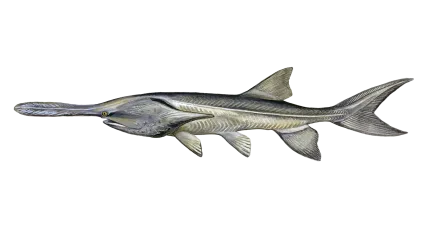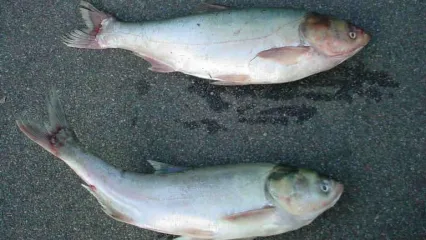
Description
The Neosho madtom is a small member of the catfish family that is approximately three inches or smaller in length. Compared to other madtom catfishes, this species can be identified by the lesser amount of dark pigment on the adipose fin. Its overall body coloration is a yellowish-tan with mottling on the back of its body.
The construction of dams for the creation of reservoirs has been the primary factor in the decline of Neosho madtoms, especially in the Spring and Illinois rivers. However, populations seem to have remained stable in the Neosho River upstream of Grand Lake O’ the Cherokees. River channelization, urban development, and sedimentation associated with agricultural practices and heavy-metal mining also contribute to habitat degradation, though the cumulative effect of these on Neosho madtom populations is largely unknown. Gravel mining also may negatively impact this fish by removing available riffle habitat. Wildlife Diversity Program biologists have assisted personnel from the U.S. Fish and Wildlife Service and Kansas Department of Wildlife, Parks, and Tourism in conducting Neosho madtom surveys in the Neosho River. Because Oklahoma contains such a small portion of the range, surveys for this threatened fish are conducted only every few years; the majority of population monitoring occurs in Kansas. The Wildlife Diversity Program funded a research and recovery grant for the Neosho madtom in 1991 through ESA Section 6 funding. Through this project, researchers from Oklahoma State University conducted a study to determine the status of the Neosho madtom in Oklahoma. The Peoria Tribe partnered with the U.S. Fish and Wildlife Service to investigate ways to spawn and raise Neosho madtoms in captivity for future population augmentation in the Spring River. The Tribe was successful in these efforts and was able to raise a small number of madtoms to adulthood, however they have yet to be produced in a quantity large enough to plan a wild release. Riverine species like the Neosho madtom benefit from the protection and proper management of riparian areas and stream banks. Maintaining vegetative buffers near river banks helps prevent erosion and excessive nutrient run-off, both of which can impact water quality for the species.
Size
2-3 inches long. This is one of the smallest catfish species.
Habitat
Historically, the Neosho madtom occurred within the Illinois, Spring, and Neosho rivers in Oklahoma; it currently only occupies 5-8 mile stretches of the Neosho and Spring rivers south of the Oklahoma/Kansas state line. Neosho madtoms tend to select for cobble-bottom riffles (areas of swiftly-moving water) over rocks. They also may be found less frequently in areas with finer gravel or sand, sometimes in association with leaf litter.
Life Cycle
Similar to other catfish, the Neosho madtom is nocturnal and hides under rocks and aquatic debris during the day, often burying itself within the substrate. Due to its secretive nature, limited information is known about the life history of the Neosho madtom. They are believed to have a lifespan of three years or less and reach reproductive age within one year. Spawning occurs during the summer months and eggs are laid under rocks on the river bed. Neosho madtoms feed on aquatic insect larvae and other invertebrates.


